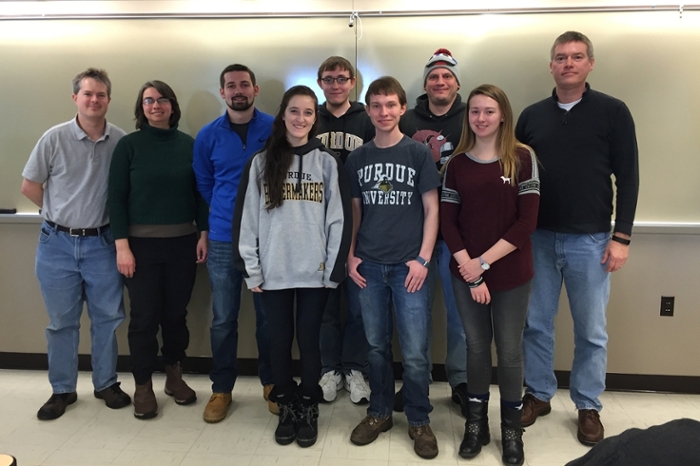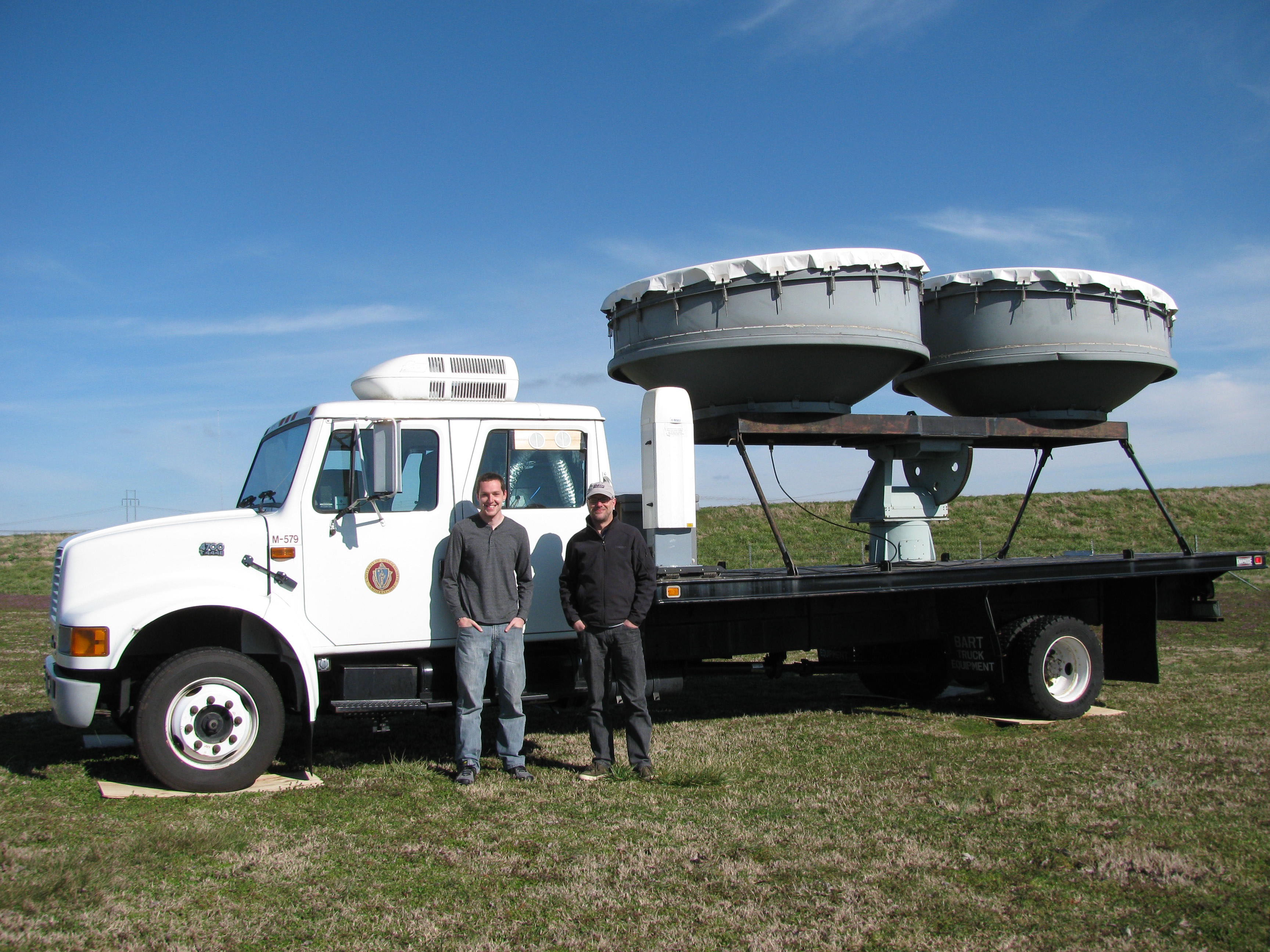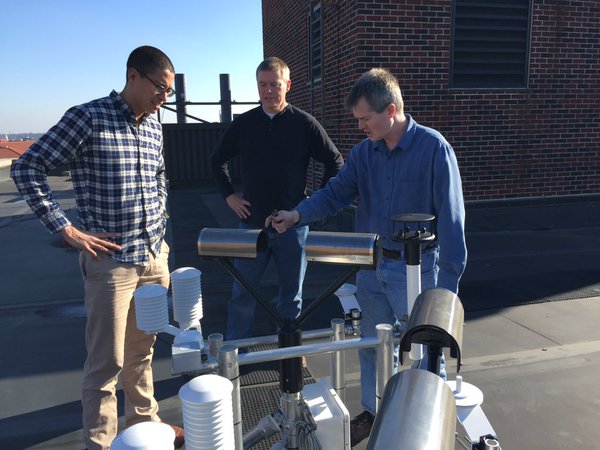VORTEX-SE Project

VORTEX-SE Field Team. Pictured from left to right: Prof. Daniel Dawson, Prof. Robin Tanamachi, Douglas Miller, Jessica Bozell, Justin Buckingham, Logan Downing, Matthew Seedorf, Olivia Gerrity, and Prof. Michael Baldwin.
The Verification of the Origins of Rotation in Tornadoes Experiment (VORTEX) – Southeast project assembled a world-class team to improve understanding of atmospheric processes that are conducive to tornadoes as well as societal vulnerability to these hazards. Purdue University, the University of Oklahoma, and the University of Massachusetts work collaboratively to contribute to VORTEX-SE by collecting special observations during intensive observing periods, applying state-of-art numerical weather prediction and data assimilation systems, and developing a statistical tornadogenesis risk model using historical data.
The Goals:
Characterize tornadic convections and environments in the southeast US
- Targeted surface, upper air, and radar observations
- High-resolution idealized numerical simulations of tornadic convection
- Development of a statistical tornado risk model
- Within each task we emphasize cool season high-shear/low CAPS (HSLC) environments

The team will deploy two different mobile radars from the University of Massachusetts. The polarimetric radar will volumetrically sample storms that pass within 60 km of its deployment site, while the continuous frequency-modulated radar will collect vertical profiles of the atmospheric boundary layer throughout the deployment period.
The team will also use instrumented probes featuring laser disdrometers to measure rain drop size distributions, wind, pressure, temperature and humidity. These flexible, portable probes are battery powered, and include GPS and datalogging capability, and were designed and built via a joint effort between researchers at Purdue (Dr. Dan Dawson), the University of Oklahoma (Dr. Michael Biggerstaff), and the National Severe Storms Laboratory (Sean Waugh). Similar units were deployed successfully during VORTEX-2 operations in 2009-2010 in the Plains.

The team will use data from radar, disdrometers, and other in situ observations, such as mobile soundings, to facilitate comparisons with numerical weather prediction models to assess various aspects of the sensitivity of storm structure to parameters in cloud and precipitation microphysics schemes, and tornadogenesis potential. Data will focus on tornadic thunderstorms within the Southeastern U.S.
Tornado risk is commonly associated with environmental conditions characterized by the combination of high values of instability and wind shear. However, these environmental parameters are often not compatible with cool-season tornadic storms in the Southeastern U.S. Moreover, risk to life and property convolves the risk of the meteorological hazard with societal vulnerability to these hazards. To address these issues, the team will develop a statistical tornadogenesis risk model and evaluate the extent to which canonical environmental parameters associated with tornado formation can capture the space/time genesis distribution in this region, with special emphasis on non-supercell formation pathways. This effort will lay the groundwork for developing novel parameters better suited to model cool-season tornadogenesis risk in the Southeast.
Our Team
|
Professor |
Research |
|---|---|
|
Risk Modeling |
|
|
Surface observations/Upper air sounding |
|
|
Risk modeling |
|
|
Surface observations/Numerical simulations |
|
|
Mobile radar observations |
|
|
Mobile radar observations |